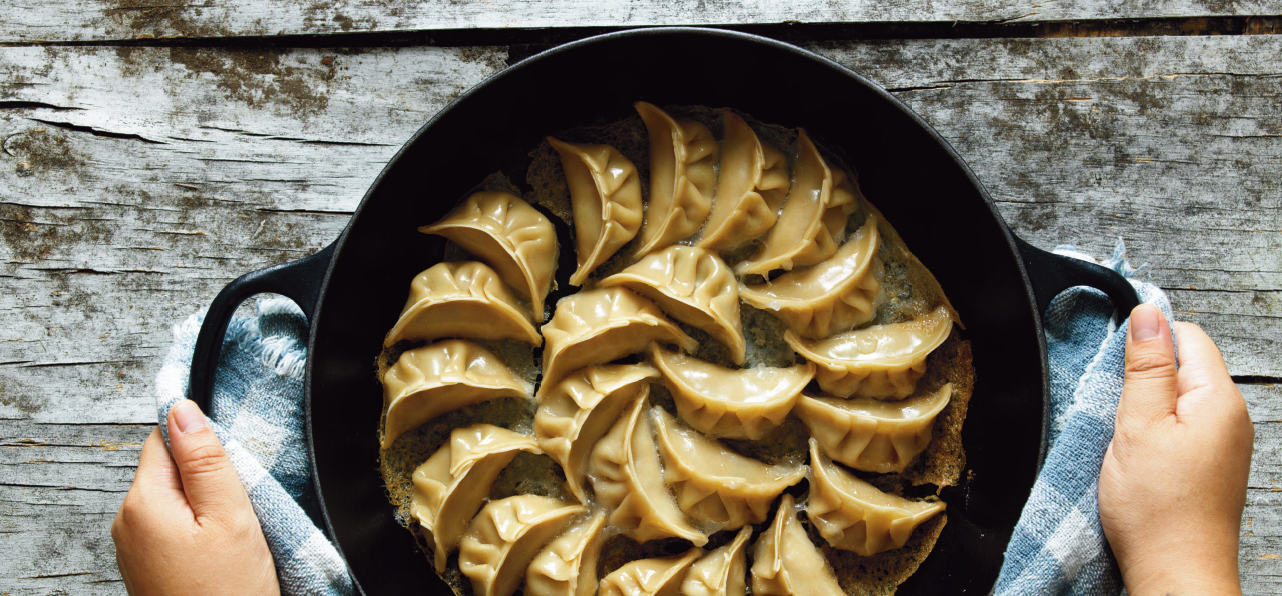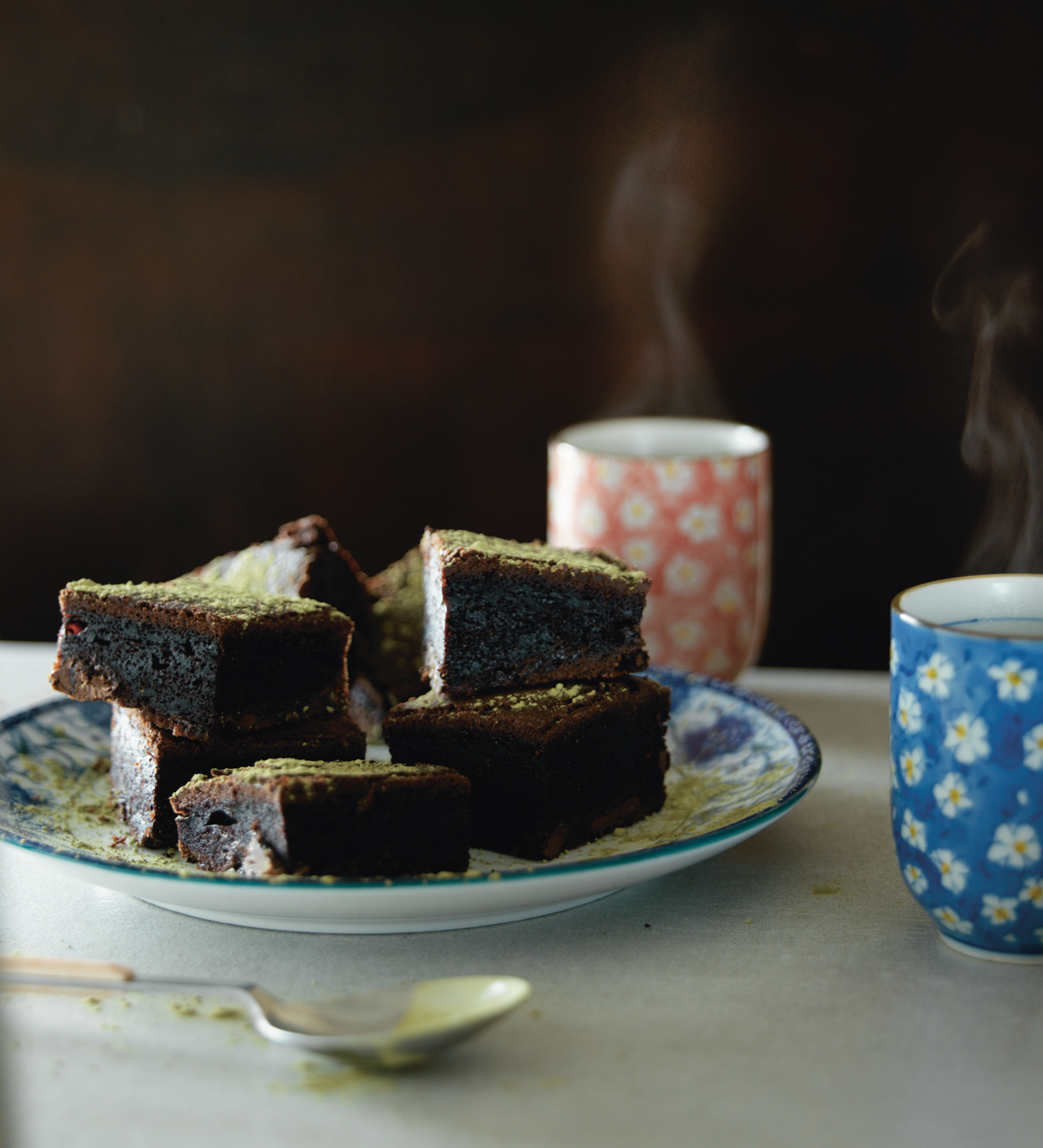
From the heart
Food holds different importance for people. For some it’s merely fuel; flavour and the colour and taste of memory means little – but for others it has the ability to transport them back decades with the whiff of a certain spice, a deeply rich reminder of loved ones and a favourite dish.

Bloemfontein in the Free State is where Ming-Cheau Lin’s family settled after leaving Taiwan. The culture shock must have been startling and immense. Just add rice: Stories and recipes by a Taiwanese South African by Ming-Cheau Lin is a deeply personal moving tale of family, food and culture in a foreign land.
Even just idly paging through this book published by Quivertree, the casual observer can’t help but be intrigued by the depth of feeling that comes across. How hard it was for a young Taiwanese girl at a new school opening her lunch box on the playground – and being mocked for its contents.
But Lin rose above those school day traumas to develop a wonderful relationship with food and becoming so successful in her blogging career that she was contacted to write this book. Her writing is approachable yet evocative, speaking as it does of family – near and far – and the importance of food in retaining cultural links.
She writes vividly of growing her culinary repertoire and assimilating Dutch food traditions courtesy of her relationship with her now husband. This book will undoubtedly be appreciated by fans of Asian flavour – but it’s so much more than that. It’s packed with tales of personal growth for the author and effortlessly provides insight into special holidays and feast traditions that she grew up with. And observing those events helps deepen a broader cultural understanding.
The recipes themselves are tempting and approachable but it’s the context they’re placed in that provides rich enjoyment between the covers of this book. And there are handy tips galore, stocking the pantry with all the necessary items for Asian flavour bombs, how to fold the perfect spring roll – which will also work well for wraps or burritos. Also simply but effectively illustrated are animations on precisely how to cut, roll and form the perfect bao bun – and dumpling folds too!
South Africans can’t help but appreciate a Taiwanese Free State boeremeisie using boerewors for shumai, the typical Hong Kong dim sum snack!


COMPETITION TERMS AND CONDITIONS
Competition submissions should reach us no later than 25th August 2021. The Prize/s is as indicated, no alternatives or cash will be provided. The decision of Integrated Media will be final, and no correspondence will be entered into. Under no circumstances shall Integrated Media, TOPS at SPAR, SPAR or its appointed representatives and the prize donors be liable to anyone who enters these Prize Draws for an indirect or consequential loss howsoever arising which may be suffered in relation to the Prize Draws. By entering these competitions, you make yourself subject to receiving promotional information. Entrants are deemed to have accepted these terms and conditions. Prize Draw Rules: The prize draw is only open to consumers who must be over 18 years of age and resident in South Africa. Employees of Integrated Media and TOPS at SPAR, SPAR and their respective advertising, media and PR agencies, as well as the family members, consultants, directors, associates and trading partners of such organisations and persons are ineligible for the draw. Participants can only win one competition every three issues.

Taiwanese beef noodle soup
This is the national dish of Taiwan, and it actually originates from mainland China. What makes it uniquely Taiwanese is the toasted soy sauce on the braised beef. This is known as “red roasting” (braising with soy sauce). The initial acidic sharp flavour of the sauce softens, replaced with a toasted aroma, introducing a new fragrance and flavour. In China, beef noodle soup has a stronger and purer beefy taste, made without the red roasting of the soy sauce.
Time: 20 mins
(2 hours simmering)
Serving: 4 bowls
Cooking oil
3 large onions, diced
5 garlic cloves, pressed
100g ginger, thickly sliced
4 spring onions, chopped
8 star anise
1kg beef shank or shin, cut into chunks (keep the bones)
1 cup low sodium soy sauce
4 large carrots, chopped (thick slices)
4 plum tomatoes or 150g rosa tomatoes, skinned
1 Tbsp Chinese five-spice
¼ cup orange juice
1 packet (300g) egg noodles
Salt
Chopped chilli
Optional extras:*
¼ cup rice wine
1 tsp – ¼ cup brown sugar
Bok Choy
Handful chopped coriander
1 spring onion, chopped
Pickled mustard leaves
(The dish will still have a rad flavour if you leave these out.)
In a soup pot over medium-high heat, heat oil and sauté onion until golden.
Add garlic, ginger, spring onion and star anise and cook until onions are golden-brown. Remove into a bowl.
Drizzle more oil into the pot and add the beef (and bones – they add rich flavour). Fry until the meat has browned.
Add a dash of soy sauce and continue to fry for 2 minutes, adding more soy sauce to “red roast” the beef.
Add the carrots, tomatoes, Chinese five-spice and orange juice (plus rice wine and sugar if using) and stir.
Return the onion mix to the pot and add about 5 cups of water, so that all the ingredients are covered.
Boil for 5 minutes, then lower heat to a slow simmer for 1½ to 2 hours. You may need to top up the water. Leave a wooden spoon in the soup to prevent it from boiling over and cover the pot.
Boil the egg noodles. Add a drop of oil to the water to keep the strands from sticking to each other and the pot. Rinse the noodles in cool water to keep them chewy.
Blanch the Bok Choy in a separate pot, if using.
Add salt and chilli to taste to the soup.
Place a handful of noodles in a serving bowl, ladle in the soup and some meat (and add the Bok Choy). If you like, garnish with coriander, spring onion and strips of pickled mustard leaves.


Dumplings
Jiǎozi
Time: 1 hour
(Resting 1 hour 10 minutes)
Serving: about 50 dumplings
420g all-purpose flour
½ tsp salt
Filling:
3 cups shredded Chinese/Napa cabbage
250g ground pork
½ cup sliced spring onion or leek
1 egg, beaten
1 Tbsp sesame oil
1 Tbsp soy sauce
¼ tsp salt
¼ tsp sugar
¼ tsp white pepper
Dipping sauce:
3 Tbsp soy sauce
1 Tbsp rice vinegar
Dash of sesame oil
Chopped chilli (optional)
White sesame seeds (optional)
Chopped coriander (optional)
For cooking:
1/2 cup oil (optional)
2 Tbsp corn flour (optional)
Mix flour and salt in a mixing bowl, then add 200ml water.
Knead (5 minutes with a hook mixer) until it’s a smooth, firm dough.
Shape it into a ball, place it back in the mixing bowl and cover with a damp cloth. Refrigerate for an hour.
Knead it again for 3 minutes, and put it back in the fridge for 10 minutes.
Make a hole in the centre of the dough to create a doughnut-shaped ring.
Stretch it out so that the dough is roughly 3cm thick. Use a sharp knife to cut the ring into 3cm pieces, dusting with flour to prevent sticking.
Roll the pieces out into flat discs on a floured surface to about 10cm in diameter. Cover these wrappers with a slightly damp towel so that they don’t dry out.
Mix the filling ingredients together.
Place a heaped teaspoon of filling onto the centre of a wrapper. Press two ends together with a dab of water to stick it together.
Pleat twice on each side towards the middle. Repeat to use up all the wrappers and filling.
Cook (see below) and serve with dipping sauce or in a broth.
Dumplings can be cooked two ways:
Boil water with a little salt in it and place filled dumplings in the water. They’ll start floating and become slightly translucent once cooked.
OR
On medium heat, add oil to a non-stick pan. Place filled dumplings in a circle in the pan and let them fry for a minute. Pour in ½ cup water. Mix corn flour with 1 cup water and pour it into the pan. Put the lid on and cook for 8–10 minutes. The dumplings are ready when they start crisping up on the bottom.


Chocolate mochI brownies
I love Mochi, a Japanese rice cake made of mochigome (a short-grained glutinous rice). The rice flour is pounded into a paste and moulded into shapes. Mochi has such a rad texture – soft, chewy, bouncy. I also love a dark-chocolate brownie, and one of the ways to make it even chewier is by incorporating Mochi. These are dark and decadent!
Time: 1 hour
Serving: 12 brownies
3½ Tbsp melted butter
2 Tbsp canola oil
4 Tbsp cocoa powder
2¼ cups glutinous rice flour
1 cup sugar
½ tsp baking soda
¼ tsp salt
Seeds from 1 vanilla pod (or 1 Tbsp vanilla extract)
2 eggs, beaten
150g dark chocolate, chopped
Preheat the oven to 180˚C. Line a square baking tin with baking paper.
Mix 1 cup warm water with the butter, oil and cocoa.
Separately, put the rest of the dry ingredients in a mixing bowl, add the vanilla and mix through.
Add the wet cocoa mixture to the dry ingredients and mix.
Add the egg and mix through, then the chocolate chips and mix again.
Pour the brownie batter into the baking tin and bake for 45–50 minutes.
Remove from the tray and leave to cool on a rack before cutting into squares.
Tip: Grind some fun salt on top before you pop it in the oven. I love using pink Himalayan crystal salt.

BACK TO TOP